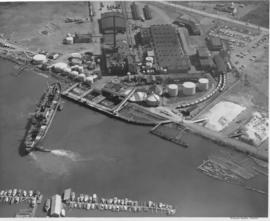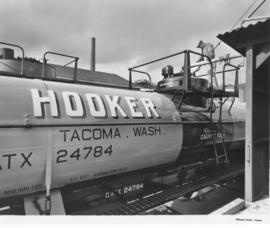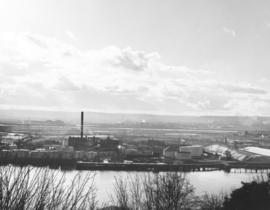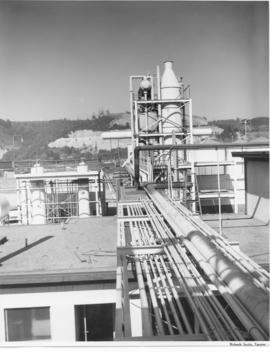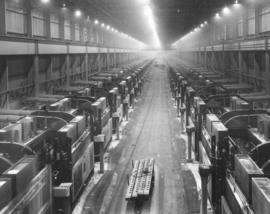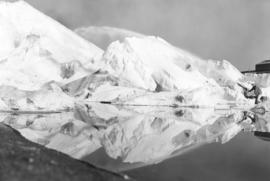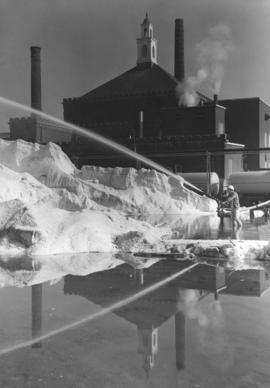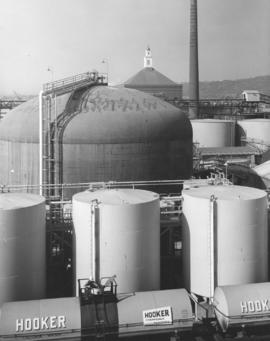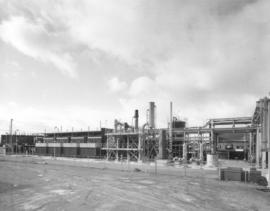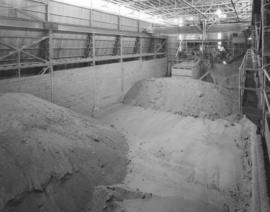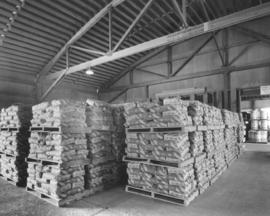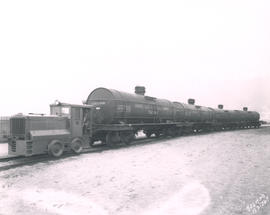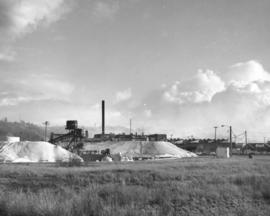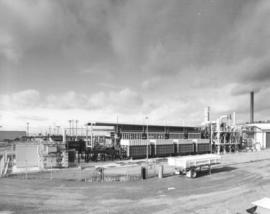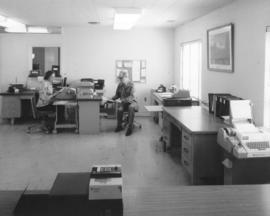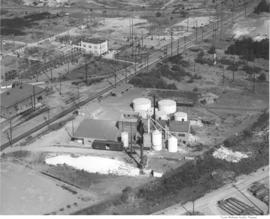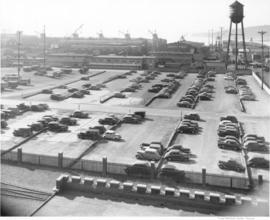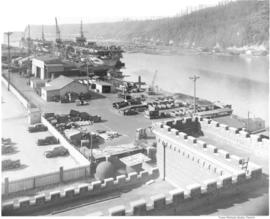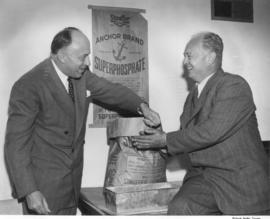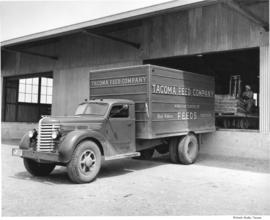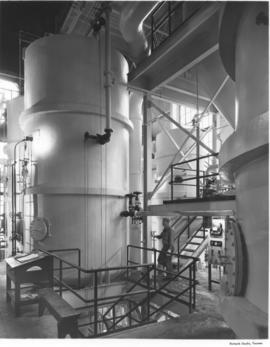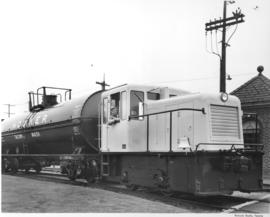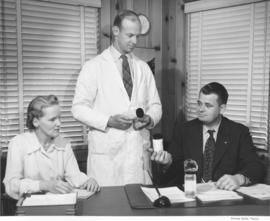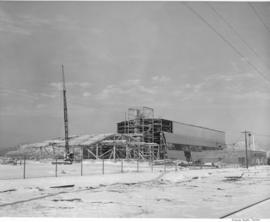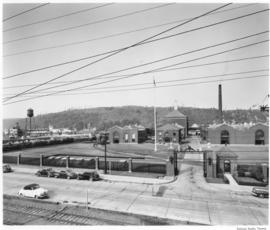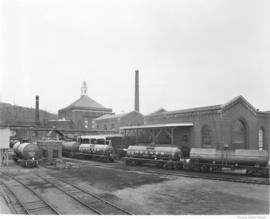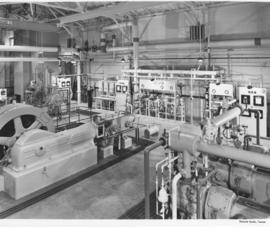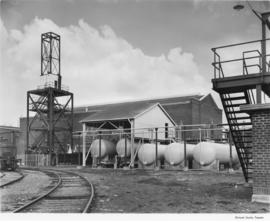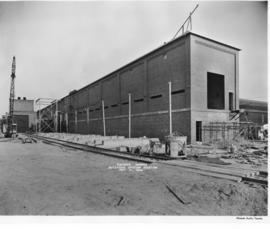- Item
- 1956-07-14
Part of Richards Studio Photographs
Aerial view of Pennsylvania Salt Manufacturing Co. Storage tanks dot the area around the plant and one of the Pennwalt barges can be seen being maneuvered to the dock by two tugs. The large corporation, now known as Pennwalt, had its beginnings in 1850 when five Philadelphia Quakers organized the Pennsylvania Salt Manufacturing Co. and constructed a plant to produce lye and alkaline salts of soda from natural salt. Today Pennwalt, with its headquarters in Philadelphia, is a worldwide manufacturer of chemicals, health products and precision equipment. The chlorine produced by the company is used in paper and pulp manufacturing, but also in water purification, bleach and the manufacture of adhesives. Caustic soda is also used in pulp production. ("South on the Sound" by Murray Morgan)
Chemical industry--Tacoma--1950-1960; Pennsylvania Salt Manufacturing Co. of Washington (Tacoma);

